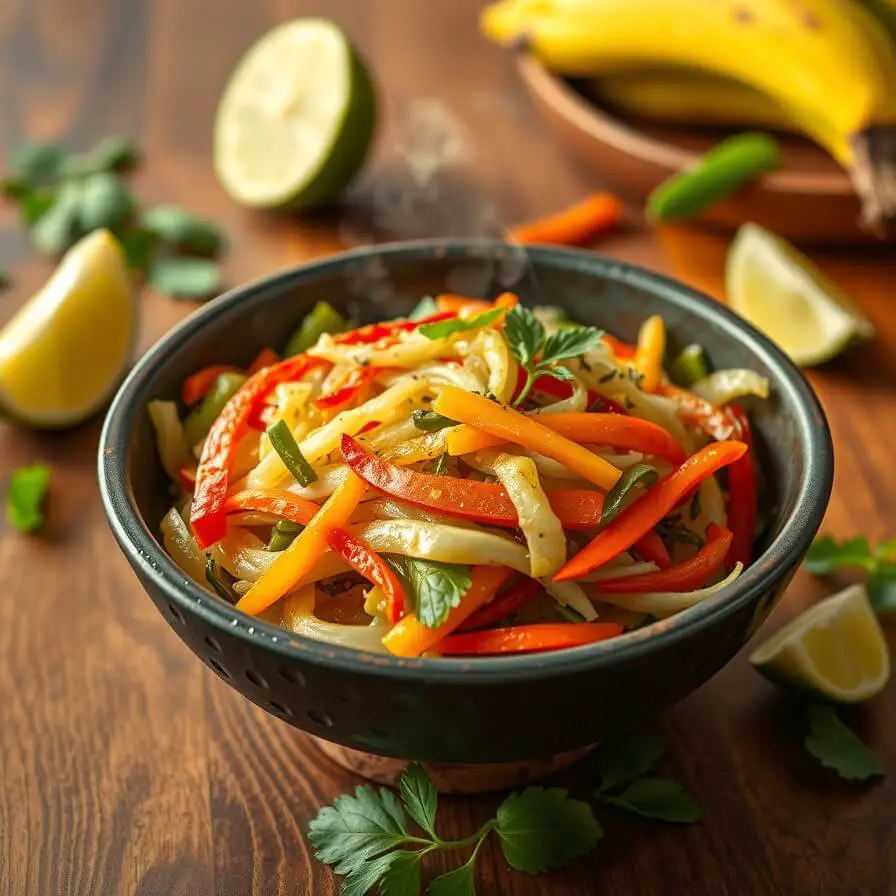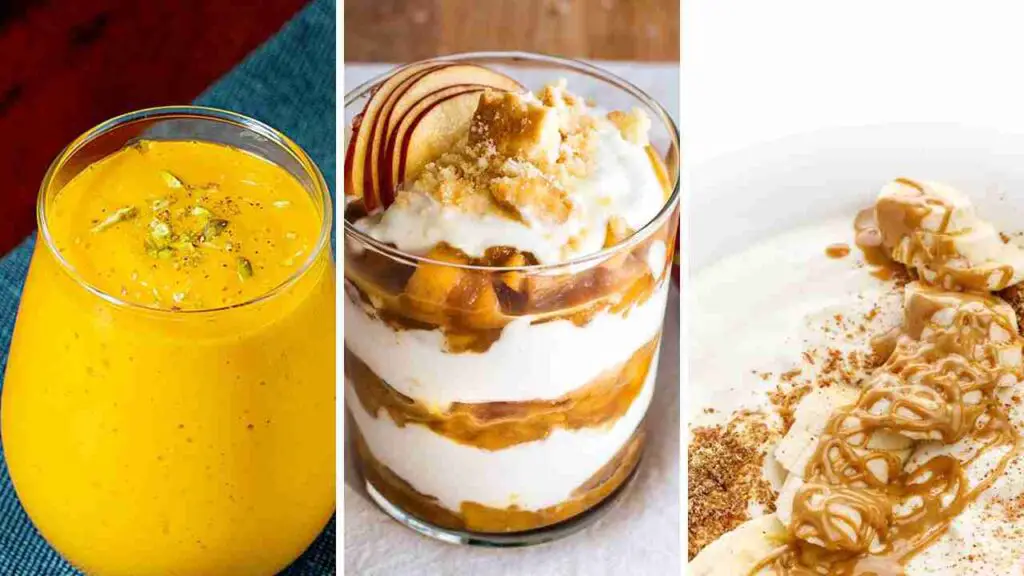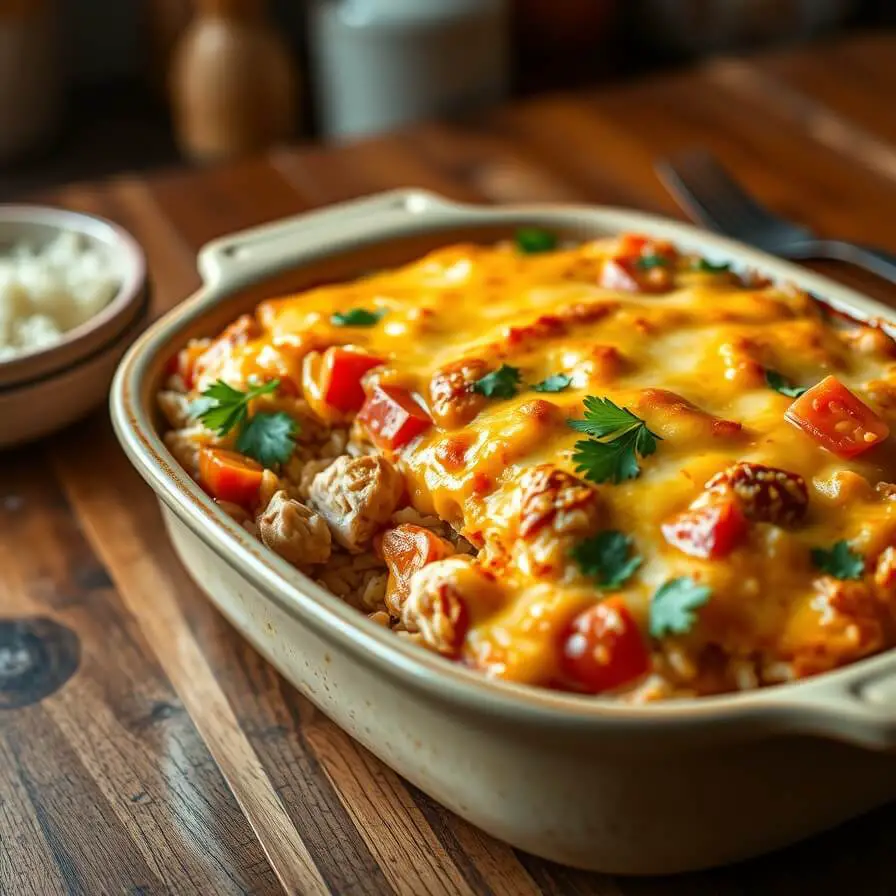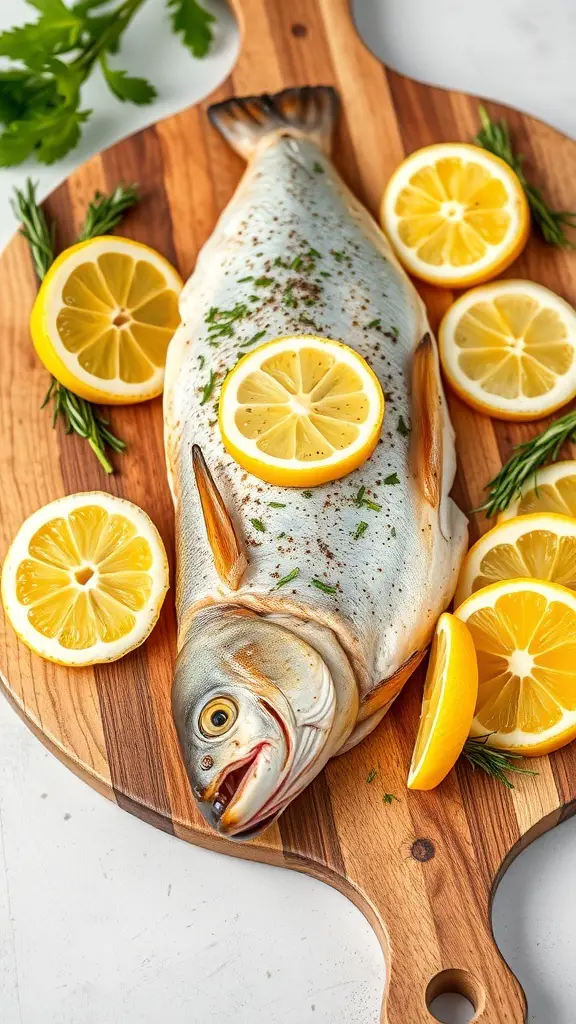Jamaican Cabbage Recipe

There’s something truly comforting about a big skillet of sizzling cabbage — especially when it’s infused with the vibrant, spicy, and downright soulful flavors of Jamaica. The first time I tasted Jamaican cabbage, it was at a friend’s backyard cookout on a warm summer evening. The air smelled like jerk chicken, thyme, and Scotch bonnet peppers, and tucked between all that heat was this humble-looking dish — tender cabbage glistening with coconut oil, speckled with colorful bell peppers and carrots.
I remember thinking, “It’s just cabbage.” But the first bite changed everything. The combination of sweetness from the cabbage, the earthy spice from allspice, and that faint island kick from the Scotch bonnet made it unforgettable. Now, whenever I make this dish at home, it fills the kitchen with the same inviting aroma that reminds me of laughter, music, and stories shared over plates of good food.
This Jamaican cabbage recipe has since become a staple in my kitchen — simple, quick, and incredibly flavorful. Whether you’re serving it alongside jerk chicken or enjoying it as a vegetarian main dish with rice, it’s one of those recipes that never fails to impress.
Why I Love This Recipe
Jamaican cabbage isn’t just a side dish; it’s a celebration of flavor and culture. What makes it so special to me is how a few basic vegetables transform into something extraordinary with the right mix of seasonings.
The magic lies in the combination of heat, aromatics, and texture. The cabbage is sautéed just enough to soften while keeping a gentle crunch — that perfect balance between tender and crisp. Add in the vibrant bell peppers and carrots for color and sweetness, and you’ve got a dish that feels alive.
Then comes the signature Jamaican twist: a bit of thyme, allspice, and Scotch bonnet pepper (though you can use habanero if you want something milder). These ingredients give the cabbage a gentle, lingering heat and a warm, aromatic depth that makes it distinctively island-inspired.
Another reason I love it? It’s versatile. You can make it with just vegetables for a light vegan dish, or toss in strips of bacon, salted cod, or shrimp for extra flavor. It works beautifully as a side with rice and peas, roasted plantains, or even grilled meats.
It’s the kind of dish that feels homely yet vibrant — perfect for a quick weeknight dinner or a special family meal. And the best part is how easy it is to make.
Ingredients for Jamaican Cabbage
You don’t need anything fancy to make this dish — just a handful of fresh produce and a few pantry staples. The key is freshness and balance.
Here’s what you’ll need and why each ingredient matters:
- Cabbage – The star of the show. I prefer green cabbage because it’s mild, crisp, and holds up beautifully during sautéing. Slice it thin so it cooks evenly and absorbs all those wonderful seasonings.
- Carrots – Add natural sweetness and color contrast. Julienned or thinly sliced carrots give a nice crunch to the dish.
- Bell Peppers – I like using a mix of red, yellow, and green for both flavor and color. Each brings its own mild sweetness and depth.
- Onion – A must for that savory base flavor. Yellow or white onions work best here.
- Garlic – Minced fresh garlic gives the cabbage a wonderful aromatic lift.
- Scotch Bonnet Pepper – The heart of Jamaican spice. You can use a small amount (and remove the seeds) for mild heat or skip it entirely if you prefer a non-spicy version.
- Fresh Thyme – Adds that earthy, aromatic note that defines Caribbean cooking.
- Allspice (Pimento) – Just a pinch gives the cabbage a warm, subtle flavor that ties everything together.
- Salt and Black Pepper – Essential seasonings to balance all the flavors.
- Coconut Oil or Olive Oil – Coconut oil gives the dish a beautiful tropical aroma, while olive oil works great if you prefer something milder.
- Optional Add-ins – For extra flavor, you can toss in some cooked bacon bits, sliced sausage, or even shrimp.
When you prep your vegetables, aim for even slices — it helps everything cook at the same rate. And don’t be shy about using your favorite veggies; Jamaican cooking is all about creativity and flavor.
How Much Time Will You Need?
That’s one of the best things about this recipe — it’s quick!
- Prep Time: Around 10–15 minutes (most of that is slicing the cabbage and chopping veggies).
- Cook Time: About 15–20 minutes.
- Total Time: Roughly 30–35 minutes from start to finish.
It’s perfect for busy weeknights when you want something nourishing but don’t want to spend hours in the kitchen.
How to Make This Jamaican Cabbage

Cooking Jamaican cabbage is more about technique and timing than complexity. Here’s exactly how I make it at home:
Step 1: Prep the Vegetables
Start by slicing your cabbage thinly — I usually cut the head in half, remove the core, and slice it into ribbons. Do the same for your carrots and bell peppers, and mince the garlic. Having everything ready before you start cooking makes the process smooth and enjoyable.
Step 2: Heat the Oil and Aromatics
Place a large skillet or sauté pan over medium heat and add the coconut oil. Once it’s hot, toss in your chopped onions, garlic, and thyme. Stir them for a minute or two until the onions become translucent and fragrant.
Step 3: Add the Peppers and Carrots
Now, add the bell peppers and carrots. Sauté for 3–4 minutes, just enough to soften them slightly. This gives the cabbage a colorful and textured base.
Step 4: Toss in the Cabbage
Add your sliced cabbage to the pan in batches if necessary. Don’t worry if it seems like too much — it will wilt down as it cooks. Stir well to coat the cabbage with all the aromatics.
Step 5: Season and Simmer
Sprinkle in salt, black pepper, and a pinch of allspice. If you’re using Scotch bonnet pepper, add it now — you can either dice it finely or add the whole pepper for a milder flavor. Stir everything together, then reduce the heat slightly. Cover the pan and let it cook for about 10–12 minutes, stirring occasionally.
Step 6: Adjust and Finish
Once the cabbage is tender but still has a little crunch, taste and adjust your seasonings. I often add a little more thyme or salt depending on the flavor. For an extra layer of richness, drizzle a tiny bit of coconut oil over the top before serving.
That’s it — your kitchen will smell absolutely amazing by this point!
Substitutions
The beauty of Jamaican cabbage is that it’s flexible. You can tailor it to your taste or use what you have on hand.
If you can’t find Scotch bonnet peppers, try habanero (for similar heat) or jalapeño (for milder spice). If you prefer no heat, just skip it and add a touch of paprika or cayenne instead for subtle warmth.
For oil, coconut oil gives an authentic tropical flavor, but olive oil or avocado oil works beautifully too.
Want to make it heartier? You can stir in:
- Cooked bacon or sausage for a smoky flavor.
- Shrimp for a quick protein boost.
- Tofu for a vegetarian-friendly option.
And while green cabbage is traditional, you can swap it for Savoy or Napa cabbage for a lighter, softer texture.
Each substitution slightly changes the flavor, but that’s the fun of cooking — making the recipe your own.
Best Side Dishes for Jamaican Cabbage
Jamaican cabbage pairs wonderfully with almost any Caribbean-inspired meal. Here are a few side dishes that complete the experience:
- Jamaican Rice and Peas – The classic pairing. Creamy coconut rice with red beans complements the cabbage’s spice perfectly.
- Fried Plantains – Sweet, caramelized plantains balance out the savory and spicy flavors beautifully.
- Jerk Chicken – The smoky, spicy flavor of jerk-seasoned meat alongside this cabbage makes a truly irresistible combination.
Serving and Presentation Tips
There’s something about serving Jamaican cabbage that just brightens the table. The colors — soft green from the cabbage, orange from the carrots, and bursts of red and yellow from the bell peppers — make it naturally beautiful without much effort.
Whenever I serve this dish, I like to pile it high on a large platter or in a rustic serving bowl. The trick is to make it look generous and inviting — Jamaican-style meals are meant to be shared, after all.
For a bit of island flair, I often garnish it with a few sprigs of fresh thyme and a drizzle of coconut oil right before serving. If I’m pairing it with jerk chicken or rice and peas, I serve the cabbage in the center and surround it with the sides — it makes the entire meal feel balanced and colorful.
If you’re serving it for a family meal, warm the serving dish slightly before adding the cabbage. It keeps the vegetables hot for longer without overcooking them. And if you want to impress guests, sprinkle just a pinch of ground allspice or black pepper on top — it adds aroma and that “just-cooked” look.
Tips and Tricks to Make This Recipe Even Better
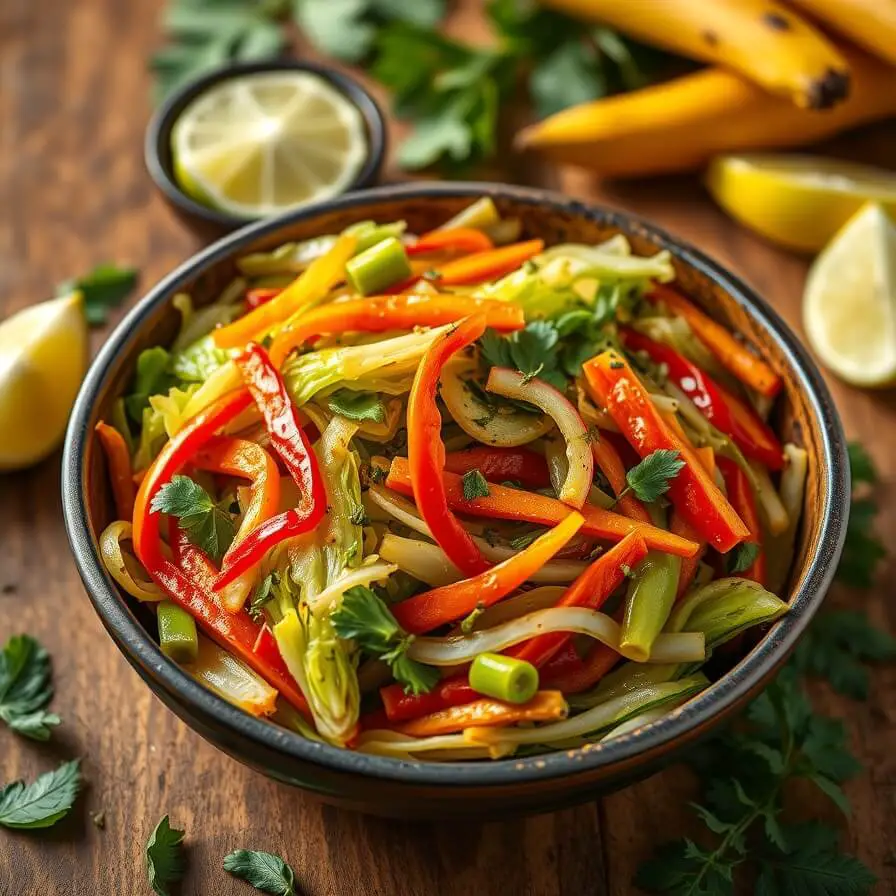
Here’s the thing about this recipe — it’s simple, but a few small touches can elevate it from good to truly unforgettable.
Don’t overcook the cabbage.
This is the biggest secret. Cabbage should be tender but not mushy. I usually cook it just until it starts to wilt — about 10–12 minutes. It should still have a bit of crunch when you bite into it.
Use fresh thyme whenever possible.
Dried thyme works in a pinch, but fresh thyme gives a brighter, more aromatic flavor that really enhances the dish.
Add a splash of coconut milk.
If you want a creamier, richer version, add a few tablespoons of coconut milk near the end of cooking. It softens the spices and gives the cabbage a silky finish.
Balance the heat.
Scotch bonnet peppers can vary in intensity, so start small and taste as you go. You can always add more spice, but you can’t take it away once it’s in there.
Let it rest before serving.
Just like many Caribbean dishes, Jamaican cabbage tastes even better after sitting for a few minutes. The flavors deepen, and the spices blend beautifully.
Common Mistakes to Avoid
Everyone makes a few missteps when they first try this dish, so here’s how to keep yours perfect every time.
Cooking on high heat the entire time.
Cabbage releases moisture as it cooks. If your heat is too high, it might burn instead of sauté. Start on medium, then lower it once the cabbage begins to wilt.
Adding too much liquid.
The vegetables will create their own steam, so you don’t need to add water. Extra moisture can make the cabbage soggy.
Skipping the seasoning.
Jamaican cuisine is all about layering flavor. Don’t hold back on thyme, allspice, or black pepper — they bring depth and warmth.
Using pre-shredded cabbage.
It might save time, but freshly sliced cabbage gives a better texture and taste. Pre-shredded versions tend to get mushy faster.
Forgetting to taste as you go.
Every cabbage, pepper, and Scotch bonnet has a different flavor intensity. Tasting throughout ensures your final dish is balanced and well-seasoned.
How to Store It
If you somehow end up with leftovers (which is rare in my kitchen!), Jamaican cabbage stores beautifully.
Let it cool completely before transferring to an airtight container. It will stay fresh in the refrigerator for up to 4 days.
When reheating, I prefer to warm it gently on the stovetop over low heat with a splash of coconut oil to revive that fresh-cooked flavor. Avoid microwaving for too long, as it can make the cabbage soft and watery.
If you want to freeze it, portion it into freezer-safe bags or containers and freeze for up to 2 months. To reheat, thaw in the refrigerator overnight and sauté briefly in a pan before serving. The texture won’t be quite as crisp, but the flavor will still be delicious.
FAQ
Q: Can I make this recipe without Scotch bonnet peppers?
Absolutely. You can skip them or replace them with jalapeño or a bit of cayenne powder for a milder kick.
Q: Is Jamaican cabbage vegan-friendly?
Yes! As long as you use coconut or olive oil and skip the bacon or sausage, it’s entirely vegan and still bursting with flavor.
Q: Can I add protein to this recipe?
Definitely. Shrimp, smoked sausage, or even tofu are great additions that make it more filling.
Q: Can I make this ahead of time?
Yes. It actually tastes even better after sitting for a few hours or overnight, as the flavors continue to blend. Just reheat gently before serving.
Q: What can I serve with Jamaican cabbage?
Rice and peas, fried plantains, or jerk chicken are perfect companions. It’s also wonderful with steamed rice or even tucked inside a wrap.

Jamaican Cabbage Recipe
- Total Time: 35 minutes
- Yield: 4
- Diet: Vegan
Description
A vibrant, flavorful sautéed cabbage dish that captures the heart of Jamaican home cooking. Tender cabbage, bell peppers, carrots, and thyme are cooked together with aromatic spices and a touch of heat from Scotch bonnet pepper. It’s quick, colorful, and delicious — perfect as a side or a light main dish. Whether served with jerk chicken or a simple bowl of rice, this dish brings the warmth and flavor of the Caribbean right to your kitchen.
Ingredients
- 1 medium head green cabbage, thinly sliced
- 2 medium carrots, julienned
- 1 red bell pepper, sliced
- 1 yellow bell pepper, sliced
- 1 medium onion, chopped
- 2 cloves garlic, minced
- 1 Scotch bonnet pepper, seeded and chopped (optional)
- 1 teaspoon fresh thyme leaves (or ½ teaspoon dried)
- ¼ teaspoon allspice
- Salt and black pepper, to taste
- 2 tablespoons coconut oil
- Optional: cooked bacon bits, shrimp, or sausage
Instructions
- Heat coconut oil in a large skillet over medium heat. Add onion, garlic, and thyme; cook until fragrant.
- Stir in bell peppers and carrots. Cook for 3–4 minutes until slightly softened.
- Add the sliced cabbage and toss well to coat in the oil and spices.
- Sprinkle with allspice, salt, and pepper. Add Scotch bonnet pepper if using.
- Cover and cook for about 10–12 minutes, stirring occasionally, until the cabbage is tender but still crisp.
- Taste and adjust seasonings as needed. Drizzle a bit of coconut oil on top before serving for extra flavor.
Notes
- For a creamier twist, add a splash of coconut milk in the final few minutes of cooking. Fresh thyme and Scotch bonnet peppers give the most authentic flavor, but feel free to adjust the spice to your liking.
- Prep Time: 15 minutes
- Cook Time: 20 minutes
- Category: Side Dish
- Method: Sautéing
- Cuisine: Jamaican
Nutrition
- Serving Size: 4
- Calories: 160
- Sugar: 6g
- Sodium: 320mg
- Fat: 10g
- Saturated Fat: 7g
- Unsaturated Fat: 2g
- Trans Fat: 0g
- Carbohydrates: 14g
- Fiber: 5g
- Protein: 3g
- Cholesterol: 0mg

